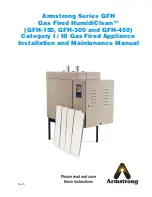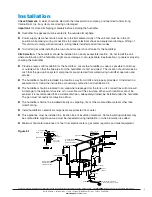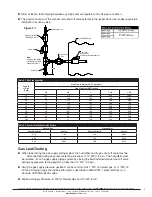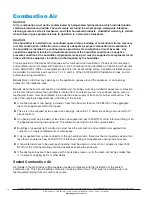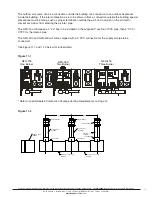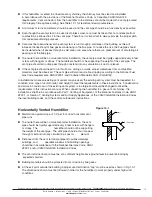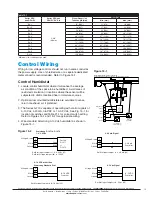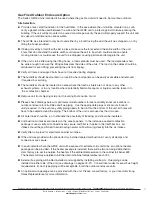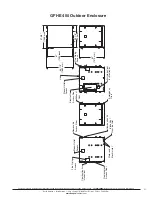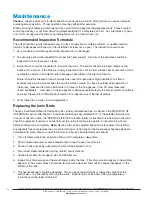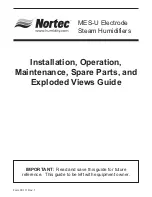
North America • Latin America • India • Europe / Middle East / Africa • China • Pacific Rim
armstrong
international.com
Designs, materials, weights and performance ratings are approximate and subject to change without notice. Visit
armstrong
international.com for up-to-date information.
13
Horizontally Vented Humidifier
Maintain an upward slope of 1/4” per foot on all horizontal vent
pipe runs.
To ensure there will be no movement after installation, the vent
pipe should be rigidly supported every 5 feet or less with hangars
or straps. The
humidifier should not be supporting
the weight of the vent pipe. The vent pipe should at no time pass
through or extend into any circulation air duct or
plenum.
Distances from the vent terminal adjacent to public walkways,
buildings, and
operable windows and building openings
should be in accordance with the National Fuel Gas Code, ANSI
Z223.1 and/or CAN/CGA.B149 Installation Codes.
The vent terminal location must be at a sufficient height above ground level to prevent blocking by
expected snowfall.
Building materials should be protected from corrosion by flue gases.
At the exit point outside the building a proper vent termination "cap" must be used as shown in Fig. 13-1.
The dimensions shown must be followed in order for the humidifier to work properly under high wind
conditions.
Figure 13-1
Wall
45 ° Vent Pipe
3"
If this humidifier is vented to a lined masonry chimney, the chimney must be sized and installed
in accordance with the provisions of the National Fuel Gas Code, or Canadian CAN/CGA.B149
requirements. Vent connectors from the humidifier to the chimney should be made with a vent pipe rated
for Category I/III appliance rating. See Table 12-1 for recommended manufacturers.
A minimum of turns and elbows should be used, and the vent pipe should be run as directly as possible.
Even though the vent system to be used is stainless steel, care must be taken that no condensate from
combustion be allowed to sit in the vent pipe. Therefore, it is important to always provide the proper pitch
for condensate draining purposes.
Care must be taken whenever the vent system is run through a cold area of the building as this will
increase the likelihood of flue gases condensing in the flue pipe. To reduce the risk, the flue pipe should
be insulated when it passes through a cold area or an area where there is a great amount of circulating air
passing over the flue pipe.
To ensure there will be no movement after installation, the vent pipe must be rigidly supported every 5 feet
or less with hangars or straps. The humidifier should not be supporting the weight of the vent pipe. The
vent pipe should at no time pass through or extend into any circulation air duct or plenum.
If the vent pipe should need to run thru floors, ceilings, or walls, proper clearances from combustible
materials must be observed. The vent pipe will also require fire stopping according to the National Fuel
Gas Code requirements, ANSI Z223.1 and Canadian Standards CAN / CGA.B149.
In installations where an existing vent system may be used, the existing vent system must be inspected for
condition, size, type of vent material, and height to meet the requirements in these instructions. Condensation
and corrosion could occur if the existing vent system is too large and should be changed to meet the
requirements in this instruction manual. When connecting the humidifier to a gas vent or chimney, the
installations shall be in accordance with Part 7, Venting of Equipment, of the National Fuel Gas Code, ANSI
Z223.1, or Section 7, Venting Systems and Air Supply Appliances, of the CAN/CGA.B149 Installation Codes,
the local building codes, and the vent manufacturer’s instructions.

